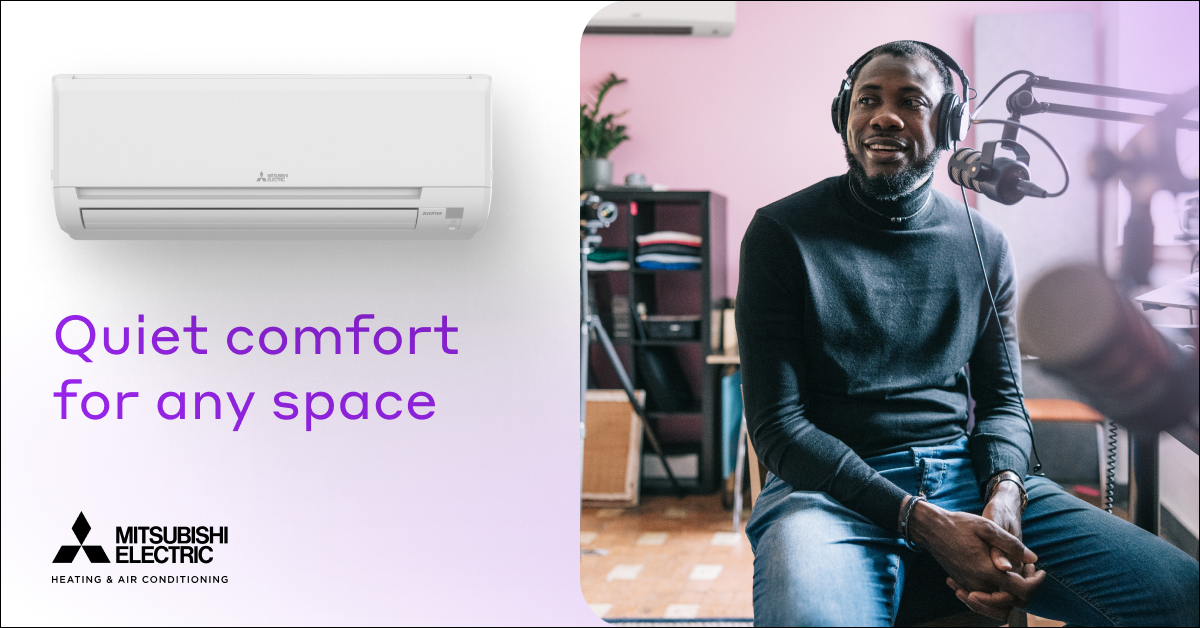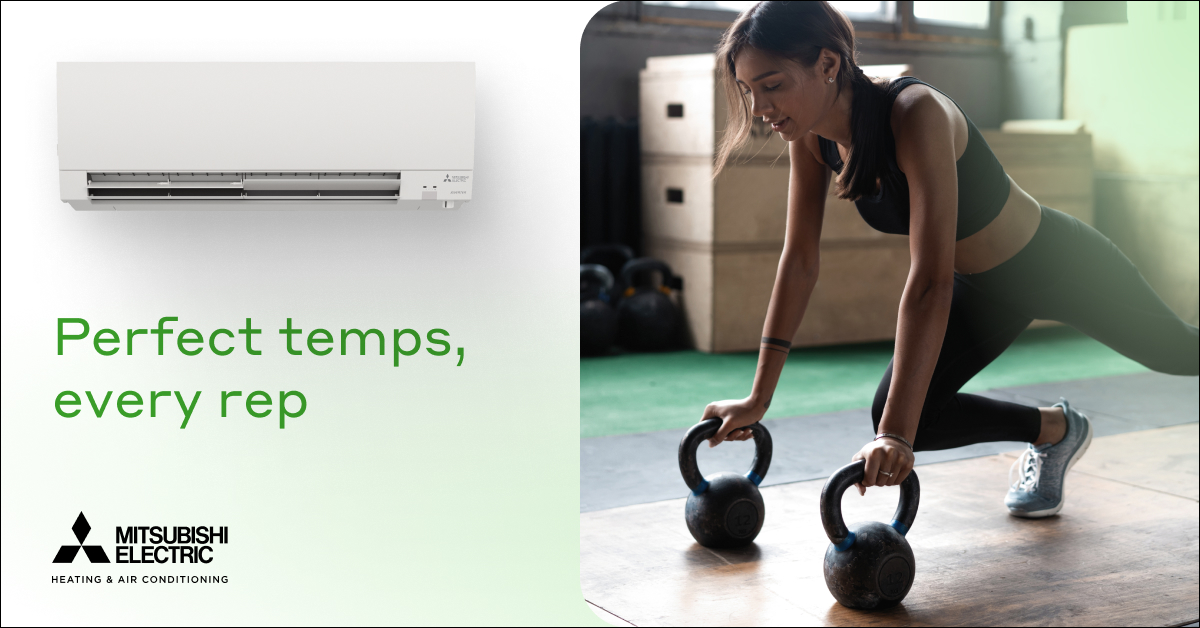
Features
- Features
- Ductless
Ductless Information
One multi-zone outdoor unit can accommodate up to eight individually controlled ductless indoor units, for a whole-home solution without ductwork.



Ductless Information
Most people have heard of ductless cooling and heating systems, and they have probably seen the small, indoor devices installed high on walls in homes, restaurants or office buildings. But what do you really know about these systems?
1. They Offer Highly Flexible Solutions
Whereas traditional heat pumps and central air conditioning systems force cooled and heated air through ducts, ductless systems deliver air directly into different zones. They are comprised of a small outdoor unit and one or more indoor units that require nothing more than mounting capabilities and access to electricity. Sometimes referred to as split systems, multi-split systems, or split-ductless systems, ductless cooling and heating offers home and business owners a cost-effective way to replace inefficient window units, space heaters and electric baseboard heaters. They can be installed in home additions, new construction, condominiums and apartments, or to improve temperature control in specific rooms. Ductless systems can even be fit for buildings that currently use ducted forced-air systems.
2. They Save You Money
One of the biggest reasons why homeowners switch to ductless cooling and heating is overall cost savings. In recent years, utility costs across the country have skyrocketed. When a home’s temperature depends upon an inefficient system, monthly bills can quickly climb out of control. Ductless systems operate on less power – they are smaller than traditional forced-air systems, and because the temperature-controlled air is delivered directly into a room, there is no loss in efficiency. Multi-split systems also allow homeowners to create “zones” in their home, which means they no longer have to cool or heat rooms that aren’t occupied. In addition to saving money on utilities, homeowners may also be eligible for tax credits or utility rebates for the year they install a ductless system.
3. They Improve Indoor Air Quality
Often times, the quality of indoor air can actually be lower than the quality of outdoor air. With traditional HVAC systems, air ducts must be professionally cleaned on a regular basis, and even after cleaning, dust and allergens are left behind. Ductless systems, on the other hand, offer multi-stage filtration that can drastically reduce dust, bacteria, pollen, allergens and other particulates in the air.
4. They Are Quicker to Install
Installing a traditional, ducted system can take several weeks and disrupts daily activities in the home. Ductless systems are far less invasive to install, and depending upon the number of indoor and outdoor units required, can be up and running in as little as one day. Multi-split systems run on small pipes that require a mere three-inch hole. That means homeowners don’t have to worry about rebuilding walls or ceilings around ductwork and there is no loss of precious square footage.
5. Ductless Cooling Lowers Your Carbon Footprint
The small size of a ductless cooling system and its zoning capabilities allows for greater energy efficiency. Ductless cooling and heating systems follow ENERGY STAR guidelines, which means they are far more energy efficient than the minimum standards set forth by the U.S. federal government. Improved efficiency saves money, of course, but it also helps reduce your total carbon output. Additionally, ductless systems take advantage of advances in chemistry to reduce effects on the environment. This means the system will have less impact on the environment throughout its lifecycle. Ductless cooling and heating systems are energy efficient, environmentally friendly and completely customizable.
FIVE POPULAR MISCONCEPTIONS ABOUT DUCTLESS HEAT PUMPS
Misconceptions
Like any technology, ductless heat pumps need to be used properly and under the right conditions in order to achieve maximum value from them. And like anything in the internet age, ductless heat pumps are subject to all kinds of misinformation and misconceptions that can mislead consumers. Here are five of the biggest misconceptions being spread about ductless heat pumps.
They Are More Expensive To Run Than Oil Or Gas Heaters
This is demonstrably false. The cost saving associated with split-ductless heat pumps is dependent upon a number of factors, including the efficiency, condition and location of the original equipment, energy type and climatic region. Yet study after study shows that the use of electric heat pumps will save you between $1,000 and $2,000 annually in energy costs.
They Collect And Distribute Bacteria
Most split-ductless heat pumps are equipped with filter systems and self-cleaning functions, so that bacteria and spores don’t have an opportunity to settle. Incoming air is purified in several steps. Large plastic filters which cover the heat exchanger, as well as electric filter collectors, can both be washed with soapy water. An internal fan insures that the heat exchanger dries completely, eliminating any chance of bacterial growth.
They Are Only Suitable For New Construction and Not Existing Properties
Like any heating system, ductless heat pumps are more efficient in well-insulated new build houses, where they are often combined with other heating systems such as underfloor in order to make full use of all available space. But they are also a perfectly good option for existing housing stock, and an especially good option when the homeowner wants to add air conditioning as well as upgrade their heating system.
They Don’t Have A Long Life Cycle Because They Operate Twelve Months A Year
This is simply wrong. Dirt, improper application and service, plus lack of preventative maintenance are the main reasons for heat pump failure. You operate your vehicle for twelve months a year, too, but you don’t expect a top quality model to break down for that reason alone. They Don’t Work In Cold Climates Hyper-Heat systems offer 100 percent heating capacity at 5° F outdoor ambient, and offer performance down to -13° F outdoor ambient, so they're the perfect supplement to an existing central heating system. Offering higher efficiency ratings than boiler-based systems, ductless heat pumps cost less to operate by maximizing the amount of heat generated from the energy consumed.
The TRUTH
...study after study shows that the use of electric heat pumps will save you between $1,000 and $2,000 annually in energy costs.



